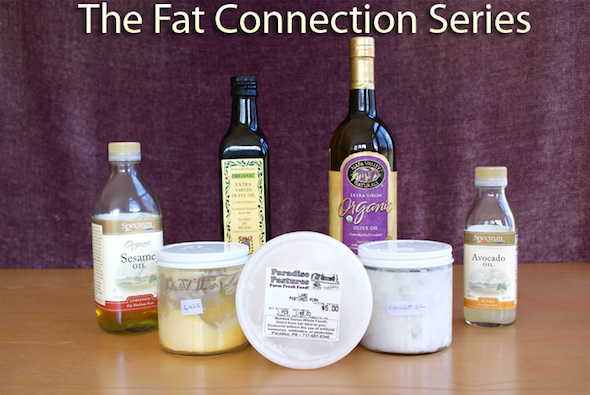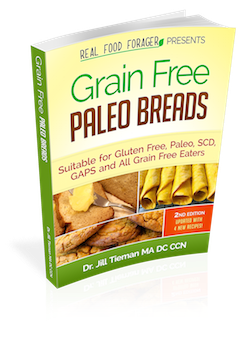In my previous post about fats, I talked about the need to eat the correct fats and how important they are to our health. In order to understand this a little more, and to understand the terminology of fats, we need talk about the chemistry of fats.
Fats are not soluble in water. Fatty acids (fats) are basically chains of carbon atoms with hydrogen bonded to the carbons. Most fats in our bodies and in the food we eat are in the form of triglycerides. These are three fatty acid chains bonded to a glycerol molecule. You may be familiar with the term triglycerides as something bad when elevated. Here again, conventional medicine dictates that elevated triglycerides come from eating too many fats. In fact, triglycerides get elevated when a person eats too many carbohydrates, especially simple sugars and starches from refined white flour products. Appropriate fats (listed below) are important and necessary in maintaining good health.
The most basic classification is according to the degree of saturation: saturated, monounsaturated and polyunsaturated.
Saturated fats are highly stable and good for cooking with high heat. They are saturated because all the carbons are linked to hydrogens. This makes them very stable and solid or semi-solid at room temperature. Examples are, butter, tallow, lard, and coconut oil.
Monounsaturated fatty acids are missing two hydrogen atoms and so two carbon atoms are double bonded to each other making one double bond, hence the work “mono”. These are still relatively stable, but are liquid at room temperature. Examples of monounsaturated fats are olive oil, avocado oil, and the oils from almonds, pecans, peanuts and cashews.
Polyunsaturated fatty acids lack four or more hydrogens and so have two or more pairs of double bonds. Some of these are the omega 6 (linoleic acid) and omega 3 (linolenic acid) fatty acids, which are named according to the position of the double bond on the fatty acid chain. These oils are highly reactive and can go rancid very quickly. They should not be used for cooking.
Another system of classifying fatty acids is by their length of the chain of carbons.
Short-chain fatty acids have four to six carbon atoms. These are always saturated. Examples are butyric acid found in butterfat from cows and capric acid found in butterfat from goats. These fats have antimicrobial properties. They are quickly absorbed and contribute to the health of the immune system.
Medium chain fatty acids have eight to twelve carbon atoms and are present mostly in butterfat and tropical oils. For example coconut oil is in this category and has antimicrobial qualities as well. Coconut oil is protective against pathogenic bacteria, yeast and viruses in the gut. This is very important for the health of the immune system, of which 80% resides in the gut.
Long chain fatty acids have fourteen to eighteen carbons and can be saturated, monounsaturated or polyunsaturated. Examples are stearic acid which is an eighteen carbon saturated fat found in beef tallow. Oleic acid is an eighteen chain monounsaturated fat found in olive oil. GLA (gamma-linolenic acid) is also in this category. This oil is found in evening primrose, borage and black current seed oil.
Very long chain fatty acids have twenty to twenty-four carbons atoms. These oils are highly unsaturated, the most well known being EPA (eicosapentanoic acid) and DHA (docosahexananoic acid). These are essential, that is, we must get these from our diet.
Most of the polyunsaturated fatty acids are omega 6 fats, found in commercial vegetable oils. These tend to be out of balance with the omega 3 fats found in eggs, fish and meat, especially when the animals are grassfed. In our culture today, most people get much too much omega 6 as compared to omega 3. This imbalance disrupts prostaglandin production and this in turn drives inflammation, high blood pressure, irritation of the GI tract, depressed immune function, and cancer.
There are many ways that modern food production has decreased the omega 3 fats from our diet. For instance, in order to increase shelf life, food manufacturers actually remove omega 3 from grains, which then make the grains high in omega 6. These same grains are fed to the cows that give us milk and meat. Studies show that the meat from grain fed cows can have ratios of omega 6 to omega 3 as high as 20:1, 30:1 or even 50:1 in favor of omega 6! Compare that to the meat from grassfed cows which show ratios of 2:1, a much healthier ratio. This is a very serious health risk and there are many studies that show this. For example, a Korean study found that the ratios of serum omega-6 to omega-3 fatty acids were highly indicative of prostate cancer risk. The researchers concluded that omega-6 polyunsaturated fatty acids have a tumor-promoting effect while omega-3 acids have a protective effect.
There is another problem associated with overconsumption of omega-6 fatty acids such as found in vegetable oils– the accumulation of NEFAs (non-esterified fatty acids) in the blood. Studies have found that NEFAs are implicated not just as a primary risk factor in sudden heart attacks, but they are implicated in the onset of cancer as well. In other words, virtually every single bottled vegetable oil and processed food you buy in the supermarket (excluding extra virgin olive oil) should be considered a health threat.
So here are the recommendations for using fats in cooking and preparing meals:
High Heat: Use saturated fats like beef tallow, chicken fat, duck and goose fat and lard from pastured animals.
Medium Heat: butter, ghee, coconut oil and other tropical oils, sesame oil (this oil has a high amount of omega 6, so use sparingly)
Low Heat: extra virgin olive oil, avocado oil (avocado oil actually has a high smoke point, but I like to use it in mayonnaise and salad dressings).
Refrigerate: flax seed oil, cod liver oil (these are medicinal oils and should never be heated).
Stay tuned for the next installment of The Fat Connection. I will be discussing the benefits of grassfed animals.
Resources for this article:
Nourishing Traditions by Sally Fallon and Mary Enig
Fat, An Appreciation of a Misunderstood Ingredient with Recipes by Jennifer McLagan











